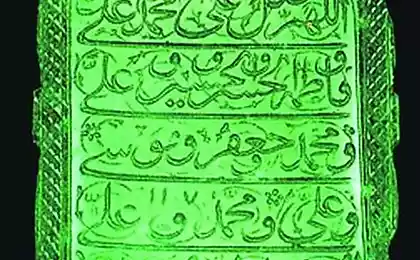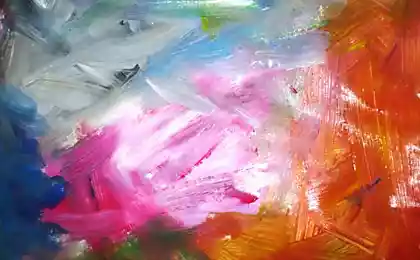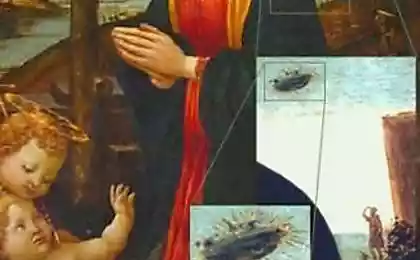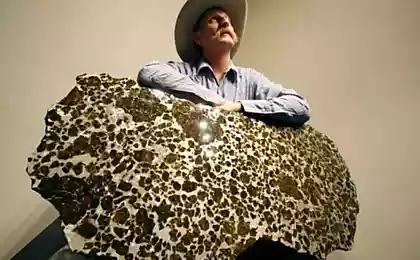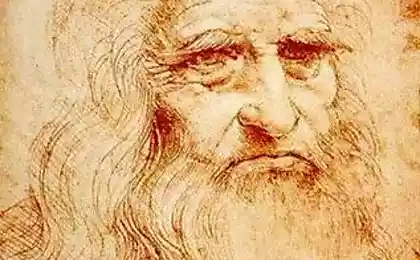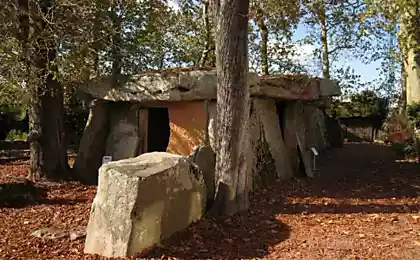1862
Found the most ancient rock painting

Red wheels, hand stencils and images of animals in Spanish caves are the oldest known examples of rock art science in Europe
The symbols on the walls in the 11 archaeological sites in Spain, including the World Heritage sites of Altamira, El Castillo and Tito Bustillo, scientists have always been appreciated for their antiquity.
Recently, however, researchers used advanced dating techniques to get more precise information about the age of the image.
The main purpose of the exercise was to confirm that the oldest drawing - this pale red dot (disc), which presumably more than 40 000 years.

Hand stencils and drawings of animals predominate in the cave of El Castillo in Spain. One of the stencil was dated 37,300 years ago and the red disc 40,800 years ago, making them the oldest cave paintings in Europe (Image: Pedro Saura).
"In Cantabria, El Castillo, we find numerous stencils hands, which are formed by spraying paint around the hand pressed against the wall of the cave" - explained Dr. Alistair Pike from Bristol University, UK, and lead author of an academic paper published in the journal Science. < br />
"We believe one of these stencils have age more than 37,300 years, and nearby there is a red disc made using this technique, and his dating of close to 40,800 years. Now we know that these are the oldest examples of ancient art in Europe, older, at least 4000 years than we thought ", - told reporters Pike. This - perhaps the oldest reliably dated Rock Art in the world.

Two-meter image of horses in Tito Bustillo superimposed on the earlier red dots, which are more than 29,000 years (Image: Rodrigo De Balbin Behrmann).
The team determined the age of the samples, investigating calcium carbonate (calcite) plaque formed in the image over the years.
This material increases as the caves are formed stalagmites and stalactites.
In the process of education in calcium include a small amount of natural radioactive uranium atoms. On the level of decay of these atoms in the thorium and the ratio of two different elements in the sample material can be very accurately determine when plaque formed of calcite.
Dating of uranium / thorium has been used for decades, but over the years as technology improved, now that scientists needed only a small sample of the material to obtain a very precise result.

Corredor de los Puntos is in the cave of El Castillo in Spain. Red wheels here date back to 34,000 - 36,000 years ago, and elsewhere in the cave 40,800 years ago, making them the earliest examples of rock art in Europe (Image: Pedro Saura).
The team took samples of fine sediments just above the paint pigments, age images must be equal to or above the age of calcite.
The earliest dating coincide with the first known immigration into Europe of modern human species (Homo sapiens). Earlier, about 41 000 years ago, their evolutionary cousins, the Neanderthals (Homo neanderthalensis), dominated the continent.
The work of Dr. Pike and his colleagues raises some intriguing questions about who is the creator of characters.
The antiquity of the paintings makes study co-author Joao Silao, a teacher at the University of Barcelona, suggests that some fragments created yet Neanderthals. If you could find the image, even older than the red dot in El Castillo, this would confirm that "gut feeling" the professor does not deceive.
"There is a chance that the authors of these images are the Neanderthals - said Professor Silao. - But I will not say that we have proved it, because it is even now can not be proved. Now all we can do - go back and look older examples as long as we are convinced that the figures, over 42 000 - 44 000 years does not exist. We will pass on all the caves in Spain, Portugal and in Western Europe, and in the end we will get the necessary information ».
Tracing the origin and changes in the level of thought and behavior with respect to time, we can understand the process of development, which is certainly important to understanding human history.
Using symbols - the ability to substitute one thing different in my mind - is one of those features that distinguishes our species from all other animals. This is something that supports our creativity and the use of speech.
American scientists have refused to believe in the existence of mermaids
Scientist denied scenarios of Universe
